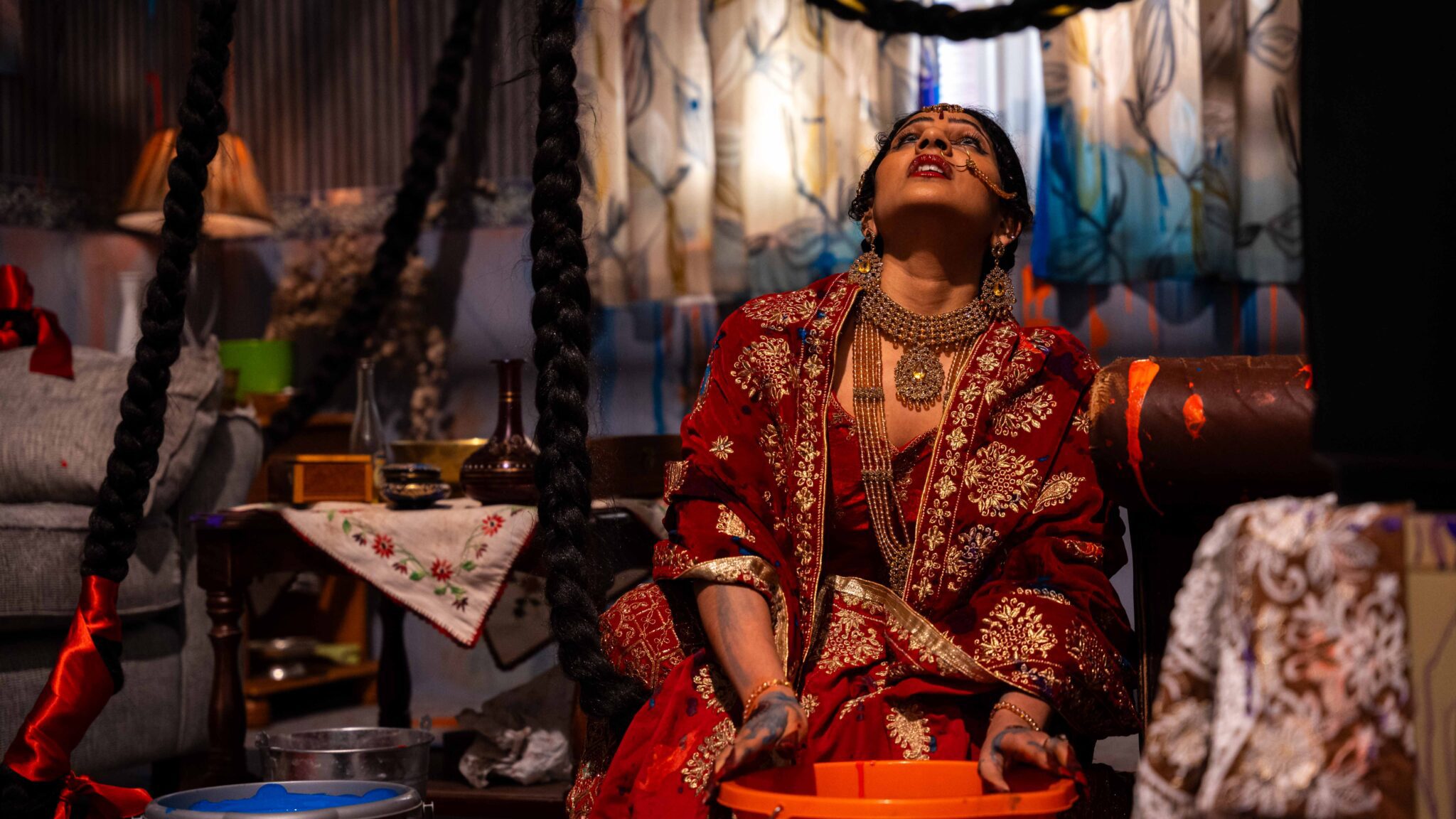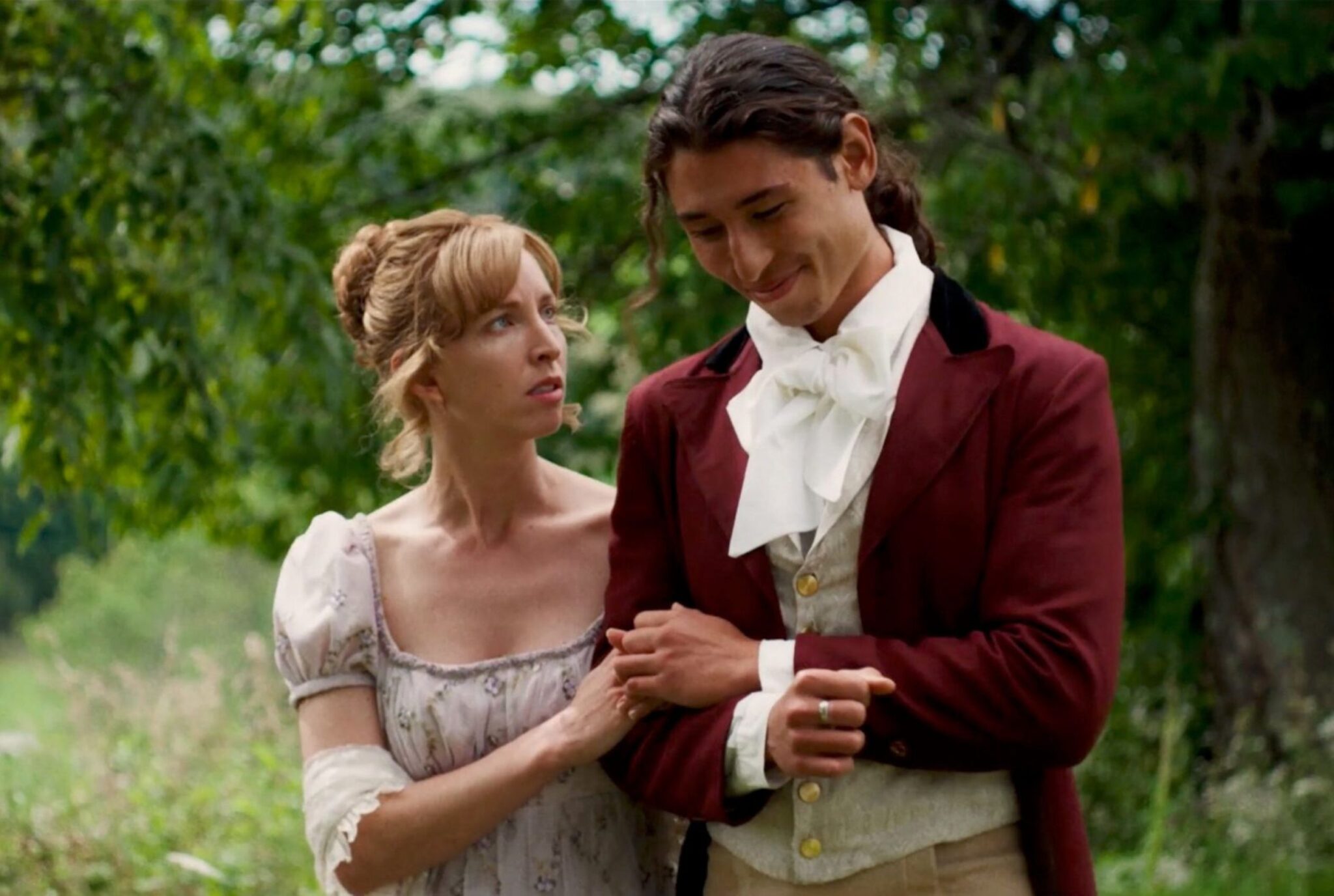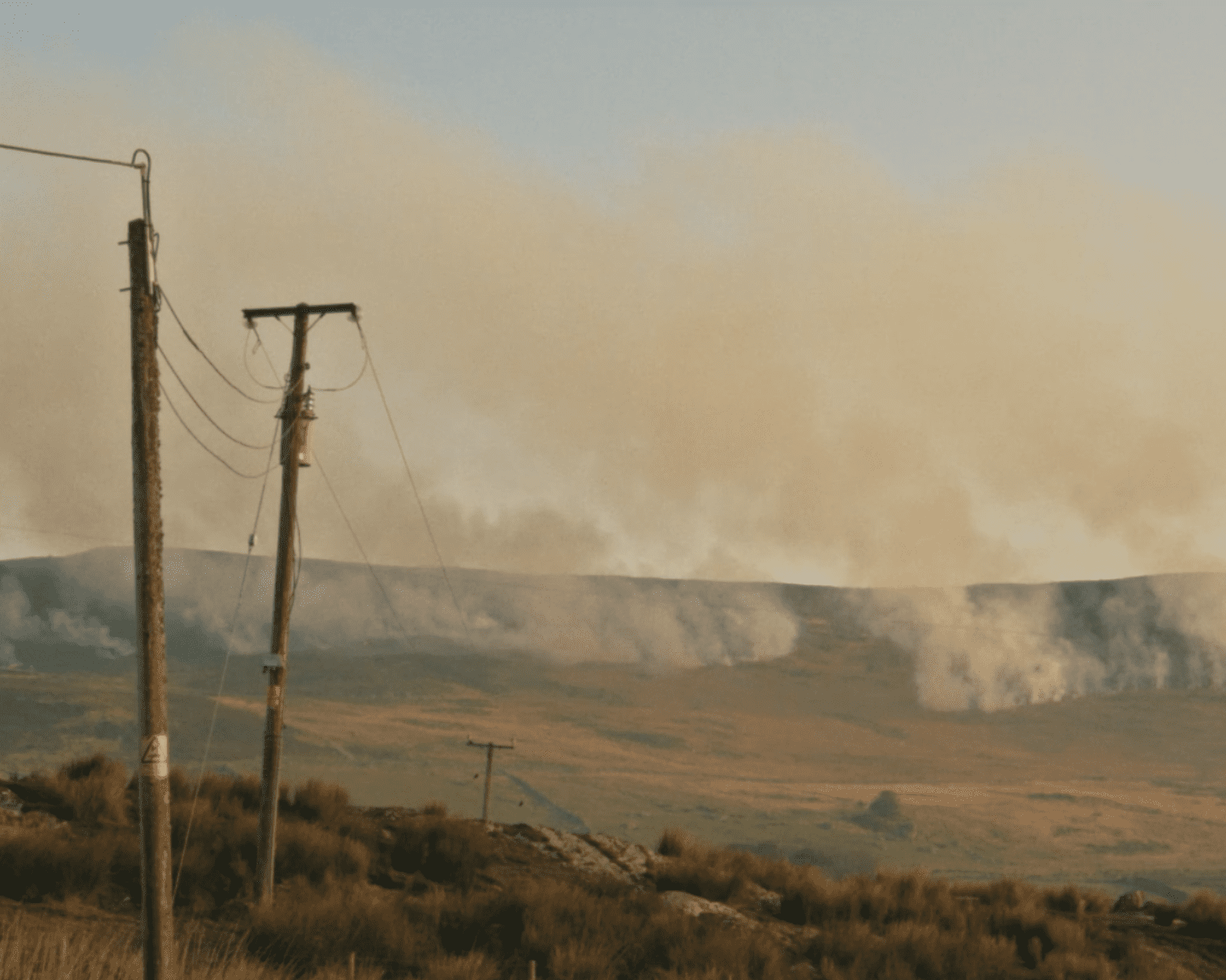Meet the Director of Spicy Pink Tea
Aqsa Arif is an award-winning Scottish-Pakistani artist and filmmaker based in Glasgow. She uses film, printmaking, photography and poetry to tell stories of dual heritage, migration and cultural dissonance. Reality and folklore collide in her work, where Arif uses mythology to speak to realities about the modern world. Her film, Spicy Pink Tea, won Best Dance Film at Aesthetica Film Festival in 2023. It tells the story of a young Pakistani girl who, inspired by the British paintings in a desolate stately home, aspires to become the perfect upper-class lady. Now, her latest film is on display at Edinburgh Printmakers. Raindrops of Rani takes Arif’s own family’s experiences of the UK asylum system as a starting point, arriving from Pakistan and being placed in a high-rise council flat in Glasgow. Years later, her family was moved by local authorities into a neighbouring tower block to make way for the filming of Sony Bravia’s 2006 Paint advert. The artist weaves these realities together through the folkloric lens of Heera, the tragic heroine from the classic Punjabi love story Heer Ranjha, creating a new narrative that blends lived experience within a hybrid fantasy world. We spoke to Arif about the project, how she draws from real life in her art and what it was like to be part of Aesthetica Short Film Festival.
A: Tell us about this project. How did it first come about?
AA: It began after Edinburgh Printmakers invited me to develop a solo show, following a residency I did with them in 2022. The narrative took shape in 2024, sparked by watching Under the Skin for the first time. It reminded me that Jonathan Glazer, who directed that film, also worked on the famous Sony Bravia Paint advert, which was filmed in my childhood high-rise flat in Glasgow. At the time, I was exploring themes of cultural dissonance and assimilation through the lens of diaspora, folklore and Bollywood spectacle. This led me to develop a story centred on a mother-daughter relationship. I drew from the myth of the Seven Queens of Sindh and reimagined it within the surreal setting of a Scottish council flat erupting with rainbow paint, blending folklore, fantasy, and personal history.
A: Raindrops of Rani explores the emotional weight of displacement and the feeling of being uprooted. How did drawing from your family’s experiences shape the narrative and emotional tone of the work?
AA: As a child, you adapt to your environment in whatever way you can. Growing up in a council flat in Scotland, I did my best to adjust, but the area felt unsafe, especially for a person of colour. Racism was still very present in the early 2000s: my mum was once chased by a man with a bat at our local bus stop, and my older brother often got into fights because of racial abuse. My mum would take me straight to school and back, trying to shield me from that reality. At school, I was just young enough to escape overt racism, but there was still a quiet disconnect – I didn’t share the same cultural references or experiences as my classmates. For my mother, the isolation was even more intense. That generational gap – the different coping mechanisms we used to navigate the hostility of our surroundings – became the emotional core for developing Raindrops of Rani.
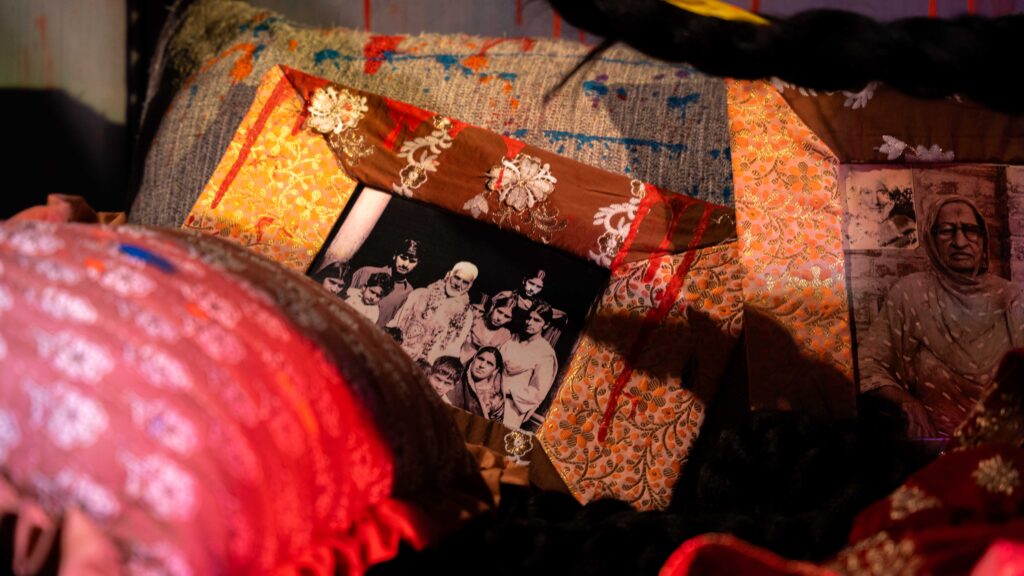
A: Your family were moved by local authorities to make way for the filming of Sony Bravia’s 2006 Paint advert, the most expensive TV commercial ever made. Why did you choose to draw from this in your work?
AA: I wanted to return to that moment because it encapsulates the political reality of having no control over your home or living situation. As a child, being moved out of the flat to make way for the Sony Bravia advert felt surreal – but behind the spectacle was a deeper issue. These buildings were already unsafe: filled with asbestos, crime and neglect, and yet asylum seekers, refugees and working-class people were left to survive in them. The local authorities justified the disruption of tenants by framing it as part of an inevitable regeneration, but the urgency only appeared when a corporation was involved. The same authorities who were slow to respond to poor living conditions became highly efficient when profit entered the equation. It speaks to the world we live in now, where corporate interests and government priorities often align, and ordinary people are left powerless. Returning to this story allowed me to explore how displacement is often wrapped in performance, and how those in power continue to shape our environments with little regard for the people who inhabit them.
A: How do you balance personal storytelling with broader political themes?
AA: The personal is inherently political. I start with lived experience and use it as a lens to explore larger systems of power and control. By grounding these broader themes in real, emotional narratives, I hope to create work that feels intimate but also speaks to collective experiences. In Raindrops of Rani, the story of a displaced princess relocated to a Scottish tower block, only to be displaced again for a commercial shoot, becomes a lens through which we can question how corporations and local authorities jointly shape, disrupt and often exploit the environments of lower socio-economic communities. I’m not interested in making didactic work, but in showing how systemic forces filter into everyday life, often quietly, insidiously, through the home, body or memory.
A: Your work often explores real-world themes through myth and folklore. How does fantasy help you explore themes of displacement and identity?
AA: Fantasy offers me a space to explore memory, emotion and lived experience without the constraints of literal truth or the pressure to justify or defend personal realities. By weaving myth and folklore into my work, I can create archetypal narratives that speak to deeper emotional truths, rather than surface-level facts. This approach allows me to reframe experiences of displacement and identity in a way that feels expansive, not reductive. Rather than inviting pity or voyeurism, I aim to create stories that resonate more universally – where audiences can recognise something of themselves, even within a world that feels surreal or unfamiliar.
A: What generational differences around trauma and belonging does the exhibition explore?
AA: I explore how the older generation of diaspora often struggle to assimilate into a new culture, not from a lack of willingness, but from deep-seated fears, both internal and external. Their children may adapt more quickly, but that speed often comes at a psychological and cultural cost. Being part of the diaspora can mean constantly being misunderstood, having to code-switch, mask aspects of yourself or subvert tradition just to feel seen. The work reflects on these generational rifts and the complex emotional terrain of belonging, especially when home is both inherited and invented.
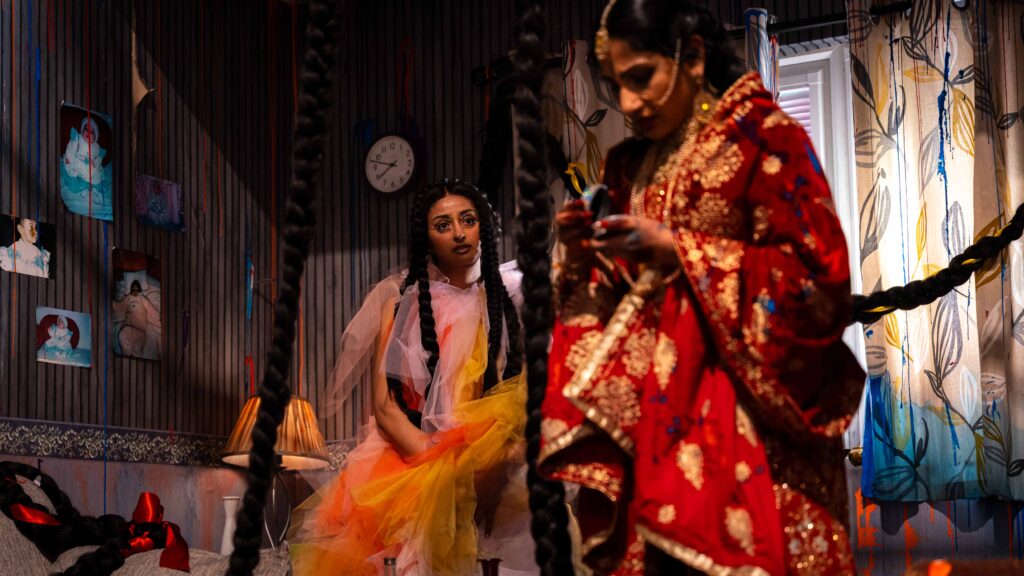
A: Why combine film, print, textile and sculpture in this show?
AA: Hybridity is both my subject and my reality. Each medium offers a distinct texture or emotion, contributing to an immersive world that reflects layered identity. I’m drawn to the surreal potential of blending, where materials and images are stitched together to challenge ideas of purity and fixed personhood. What happens when something becomes too much – too hybrid, too embellished, too contradictory? These choices are autobiographical. As someone who exists between categories, I find balance in the in-betweenness. The mixed forms I create mirror the diasporic experience: holding multiple selves at once, without the need for resolution.
A: You won best Dance at the Aesthetica Film Festival in 2023. What was your experience of being part of the festival?
AA: My experience at Aesthetica Film Festival was genuinely transformative. I stayed for the full week to take in everything the festival offered. The breadth and depth of the programming really impressed me; it felt like a space that took both film and artists seriously. To win Best Dance for Spicy Pink Tea was a proud and unexpected moment, especially being in a room filled with filmmakers I admired. One of the most valuable outcomes was meeting artist-filmmaker Michelle Williams Gamaker. We’ve stayed in touch, and I’m now part of a mentorship with her. Aesthetica opened doors to unexpected collaborations and I felt nurtured as an artist.
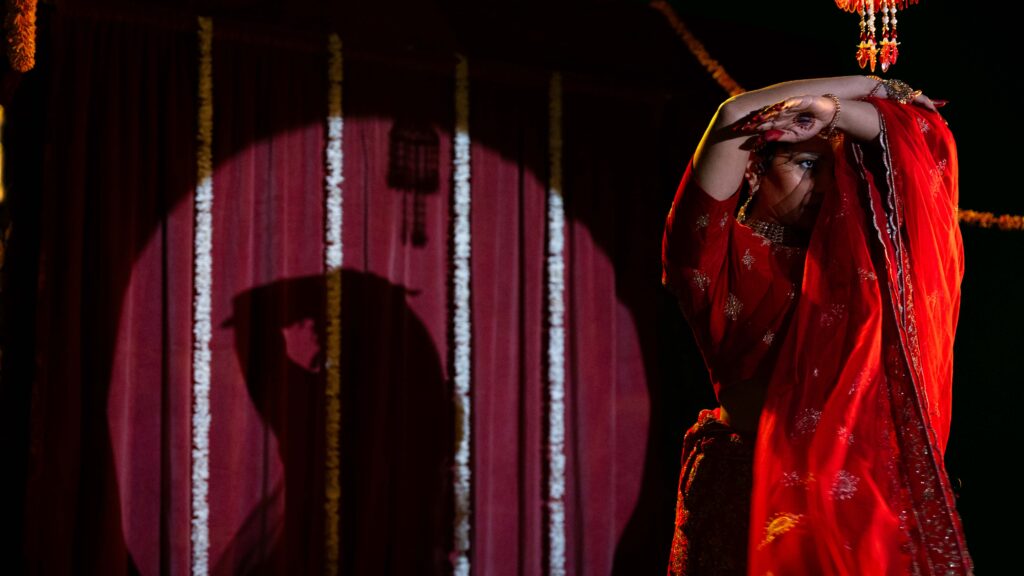
A: Why do you enjoy film as an artistic medium?
AA: Film challenges me in the best possible way. Its inherently collaborative nature pushes the work to become more ambitious and refined than anything I could achieve alone. I’m deeply engaged with the language of film and how it can be woven into my wider artistic practice. If you build a group of artists, performers, makers, and skilled crew, it means the process becomes one of shared growth, where we challenge and learn from each other. While art-making can often be solitary, I’ve realised I thrive through teamwork. It not only strengthens the work but also builds a sense of community around the creative journey.
A: What do you hope audiences take away from visiting the show?
AA: I hope that the show builds empathy. Audiences can relate to the relationship dynamics, particularly the bond between mother and daughter, and through that emotional connection begin to engage with the overarching themes of displacement and cultural dissonance. I want viewers to feel immersed in a world that is both surreal and familiar – where the personal becomes political, and the fantastical becomes a way to access deeper truths. Ultimately, I hope the work encourages reflection on how identity is shaped by place, family and the systems that move us.
Aqsa Arif: Raindrops of Rani is at Edinburgh Printmakers until 2 November: edinburghprintmakers.co.uk
Words: Emma Jacob & Aqsa Arif
Discover More Films at Aesthetica Film Festival 2025, which runs from Wednesday 5 November until Sunday 9 November.
Tickets and Passes Now On Sale Now: asff.co.uk
All images: Aqsa Arif, Raindrops of Rani. Photo by Talha Imam.




